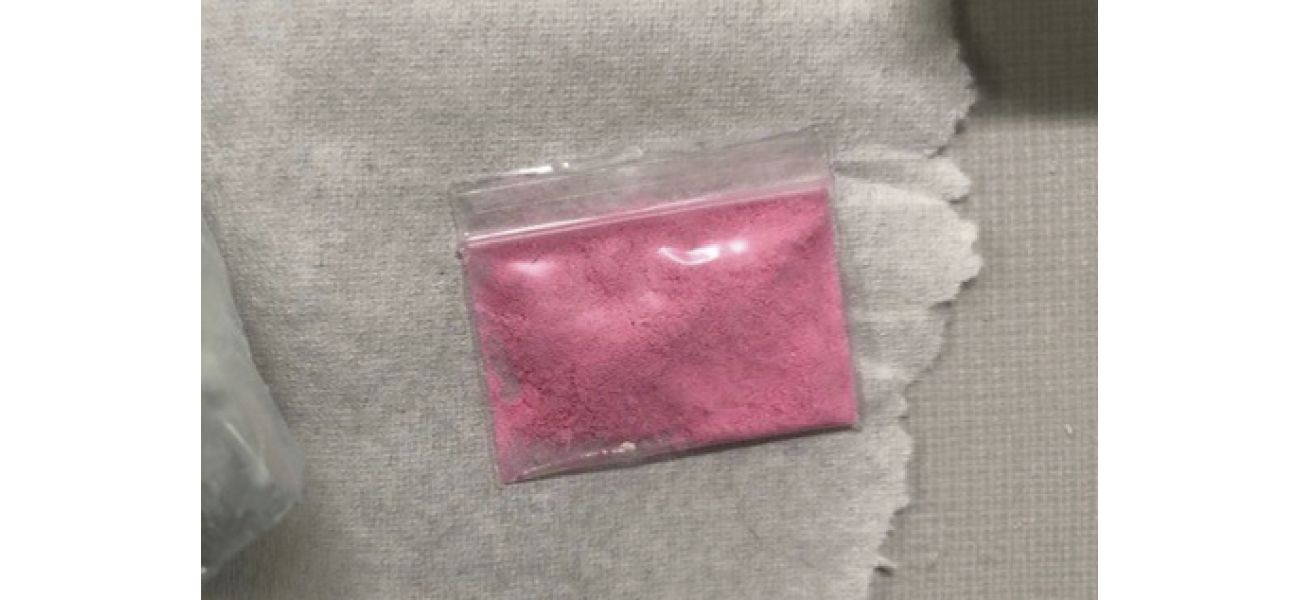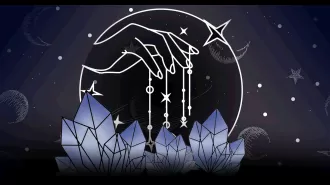'Pink cocaine' is a type of recreational drug that is gaining popularity, but its exact composition and effects are not fully known.
It's not cocaine.
October 23rd 2024.

There's a new recreational drug making headlines lately, and it's called "pink cocaine." But before you go jumping to conclusions, let's clear up some confusion - this drug doesn't actually contain cocaine like its name suggests. In fact, it's a blend of various substances that have been dyed pink, leading to its misnomer. This powder has been popping up in drug seizures and even caught the attention of law enforcement when it was reportedly found in One Direction star Liam Payne's toxicology results. But what exactly is this pink cocaine, and why is it causing such a stir?
First and foremost, let's address the big question - why is it pink? According to Joseph Palamar, a researcher at NYU Langone Health, it's simply a matter of adding food coloring or dye to the mix. However, despite its name, pink cocaine is more likely to contain ketamine - a drug with very different effects - rather than actual cocaine. In fact, studies have found that this powder can also contain methamphetamine, MDMA, bath salts, caffeine, and even opioids. It's essentially a concoction of whatever drugs are available mixed with a pink dye for marketing purposes.
The term "tusi" has also been used to refer to pink cocaine, but Palamar explains that this name was likely created to mimic the recreational drug 2C-B, popularized in the rave scene back in the 1990s for its euphoric effects. However, further analysis has shown that tusi does not typically contain 2C-B. This may be confusing for younger generations who are not familiar with the history of the name and may mistakenly assume that pink cocaine is actually cocaine.
So why is pink cocaine considered dangerous? Well, the main danger lies in not knowing exactly what substances are in it. Users may experience unexpected or unwanted effects, or even take a larger amount than they can handle based on past experiences. Ketamine, for example, is a powerful anesthetic that has been used recreationally in recent years. It can cause hallucinations and have negative impacts on breathing and heart function. Palamar notes that it's not a "fun" drug for most people, and large doses can create a sense of dissociation and alienation.
One of the biggest risks with pink cocaine is that it can easily be mistaken for actual cocaine, especially when combined with alcohol. Palamar warns that someone who is drunk at a party and takes pink cocaine thinking it will counter the effects of alcohol will likely have a very unpleasant experience, as ketamine and alcohol do not mix well. So where exactly is this pink cocaine coming from? While it has been reported being seized by the US Coast Guard off the coasts of Mexico and Central and South America, Palamar points out that it can also be easily made by drug dealers in the United States who mix their own batches.
In conclusion, pink cocaine may sound alluring or intriguing, but it's important to remember that it's not what it seems. This drug is a dangerous and unpredictable mixture of various substances, and its pink color is simply a marketing tactic. As always, it's crucial to be aware of what substances we are putting into our bodies and to educate ourselves on the potential risks involved.
First and foremost, let's address the big question - why is it pink? According to Joseph Palamar, a researcher at NYU Langone Health, it's simply a matter of adding food coloring or dye to the mix. However, despite its name, pink cocaine is more likely to contain ketamine - a drug with very different effects - rather than actual cocaine. In fact, studies have found that this powder can also contain methamphetamine, MDMA, bath salts, caffeine, and even opioids. It's essentially a concoction of whatever drugs are available mixed with a pink dye for marketing purposes.
The term "tusi" has also been used to refer to pink cocaine, but Palamar explains that this name was likely created to mimic the recreational drug 2C-B, popularized in the rave scene back in the 1990s for its euphoric effects. However, further analysis has shown that tusi does not typically contain 2C-B. This may be confusing for younger generations who are not familiar with the history of the name and may mistakenly assume that pink cocaine is actually cocaine.
So why is pink cocaine considered dangerous? Well, the main danger lies in not knowing exactly what substances are in it. Users may experience unexpected or unwanted effects, or even take a larger amount than they can handle based on past experiences. Ketamine, for example, is a powerful anesthetic that has been used recreationally in recent years. It can cause hallucinations and have negative impacts on breathing and heart function. Palamar notes that it's not a "fun" drug for most people, and large doses can create a sense of dissociation and alienation.
One of the biggest risks with pink cocaine is that it can easily be mistaken for actual cocaine, especially when combined with alcohol. Palamar warns that someone who is drunk at a party and takes pink cocaine thinking it will counter the effects of alcohol will likely have a very unpleasant experience, as ketamine and alcohol do not mix well. So where exactly is this pink cocaine coming from? While it has been reported being seized by the US Coast Guard off the coasts of Mexico and Central and South America, Palamar points out that it can also be easily made by drug dealers in the United States who mix their own batches.
In conclusion, pink cocaine may sound alluring or intriguing, but it's important to remember that it's not what it seems. This drug is a dangerous and unpredictable mixture of various substances, and its pink color is simply a marketing tactic. As always, it's crucial to be aware of what substances we are putting into our bodies and to educate ourselves on the potential risks involved.
[This article has been trending online recently and has been generated with AI. Your feed is customized.]
[Generative AI is experimental.]
0
0
Submit Comment





